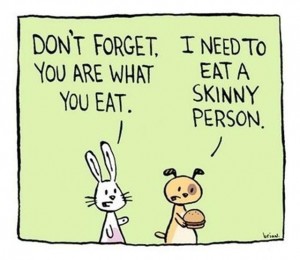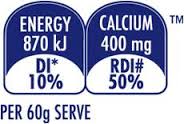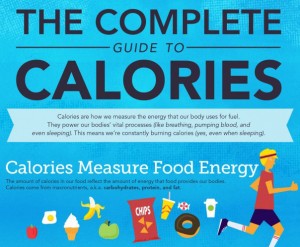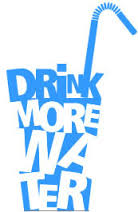Daily Intake Levels
Australia and New Zealand Food Standards Code (FSC) uses reference values for the daily intake guide, which are used on food labels.
According to Australia and New Zealand FSC, a balanced diet for an average adult is made up of the following nutrients each day.
Energy 8,700 kJ
Protein 50g
Fat 70g
Carbohydrates 310g
Sugars 90g
Sodium 2.3g
Dietary Fibre 30g
Saturated fatty acids 24g
The Daily Intake Guide is just a guide, and the values are based on an adults’ daily requirement of 8700kJ – your daily intake may be higher or lower than this. They are not recommendations to meet, but an intake which should give most people a suitable amount of nutrients. They are there to help you decide what is in the foods you are planning to eat so that you can make informed choices.
There are a couple of calculators you can use to help guide you with your own intake and daily energy needs. Remember, the more sedentary you are over the course of a day, the more likely it is that you may not need as much as is recommended. If you are highly active throughout the day and exercise on top of that, you may need a little more than is suggested. Use the following tools as guides only and speak to a registered dietician if you need more help understanding what is right for you.
Energy & Food
The amount of energy in our bodies, obtained from the food we eat, is measured in calories or kilojoules. There are several different macronutrients from which we obtain energy, each of which has a different energy value per gram. If you know one measurement better than the other, you can use the simple conversion here: 1 kJ = 4.2 Calories.
Water 0 Calories/0 kJ
Carbohydrate 4 Calories/16 kJ
Protein 4 Calories/ 16kJ
Fat 9 Calories/29 kJ
Alcohol 9 Calories/37 kJ
Energy Content
1g of fat = 37 kJ
1g of alcohol = 29 kJ
1g of protein = 17 kJ
1g of carbohydrates = 17 kJ
1g of dietary fibre = 8 kJ
The body has the capacity to use carbohydrates, fats, and proteins to generate energy and at any one time no one fuel source is used in isolation. The body does, however, have a preference in fuel choice.
- Carbohydrates – the body’s preferred fuel source. This is the only fuel source used by the brain and the central nervous system, and is the preferred source of immediate energy for the working muscles. When our body does not have sufficient levels available we will feel tired, moody, and have poor concentration and coordination. Carbohydrates protect your muscle and help regulate the amount of sugar circulating in your blood. Carbs include starches and sugars.
- Fats – provide an infinite amount of energy to the body, especially throughout continuous low intensity exercise. Fat insulates your body, cushions vital organs, and builds new cells. It is critical for brain development and nerve function, and is needed to absorb fat-soluble vitamins (Vitamin A, D, E, K, and carotenoids). Fat can be broken down to saturated, polyunsaturated (omega 3 and 6), and monounsaturated fats. Consume less than 10% of calories from saturated fats, and try and consume most fat sources from polyunsaturated or monounsaturated fatty acids.
- Protein – the body increases its reliance on protein for fuel as carbohydrate levels decrease. Protein is used in the body to build new cells, maintain tissues, and regulate cell function. Protein is made up of amino acids.
Vitamins and minerals are micronutrients, which are also important for functioning but do not provide us with energy (kJ).

How do we know how much to eat?
There are various guides and equations (seen above), which we don’t always have time to use – but they are a good idea to have a look at and understand. For the day-to-day food preparation, simply using your hand/palm/fist can indicate how much you need.
For example, females can use:
- 1 palm of protein dense foods at each meal
- 1 cupped handful of carb dense foods at most meals
- 1 fist of vegetables at each meal
- 1 thumb of fat dense foods at most meals
Then simply add or subtract a little bit here and there according to your specific needs. If you are looking to lose weight, a little less of the protein, fat, and carbs might help.
Men on the other hand can start with:
- 2 palms of protein dense foods at each meal
- 2 cupped handfuls of carb dense foods at most meals
- 2 fists of vegetables at each meal
- 2 thumbs of fat dense foods at most meals
Adjust your portions according to your activity level, hunger, fullness, and other factors. Once you start to find out what works best for you, stick to it.
Dietary Deficiencies
Often people are hungry or not feeling great, because they have a dietary deficiency. Dietary deficiencies are common – and when you’re deficient in key nutrients, your body doesn’t work as well as it could, and therefore you don’t feel as good as you should!
The main deficiencies people have include:
- Water (dehydration)
- Essential fatty acids
- Vitamins and minerals
- Protein
Once you find what you’re deficient in, you need to start eliminating the deficiency. This would be different for every person, but if you are deficient in the examples above, you would simply increase your water intake, essential fatty acids, vitamins and minerals, and increase your protein intake.




